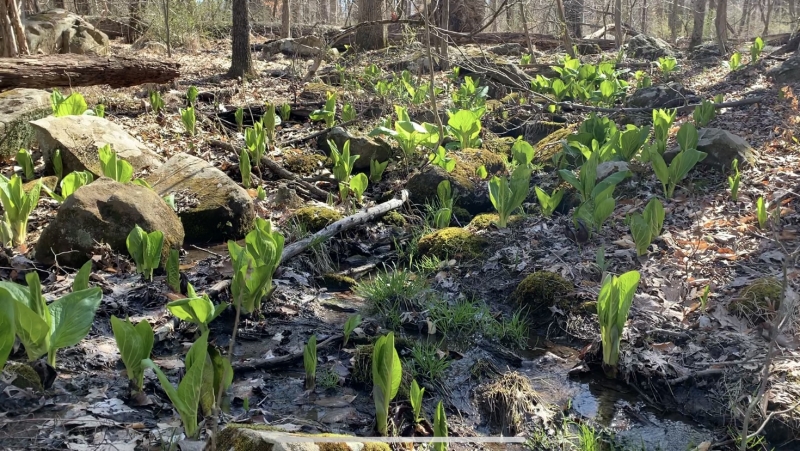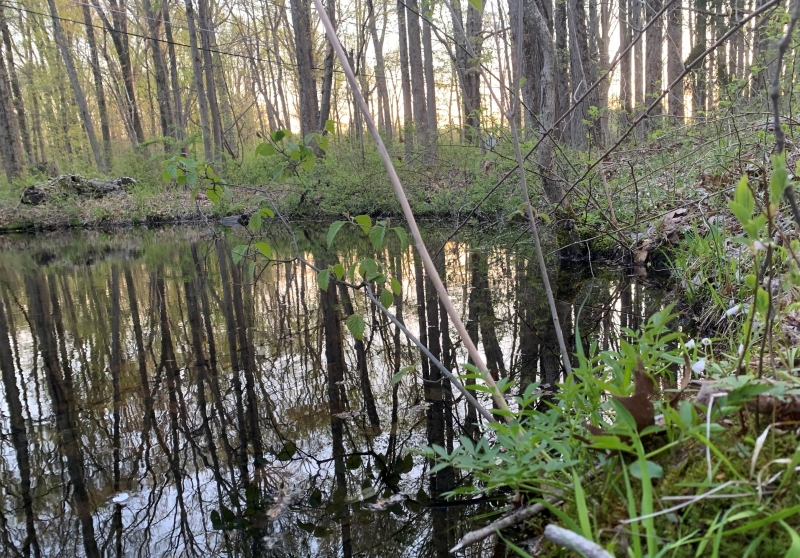I am honored to be invited as a guest blogger for ELI’s Vibrant Environment Blog. As a first-year student at Carnegie Mellon University, I am studying computational genomics, statistics, and water sustainability.
 My educational path is driven by a lifelong captivation with peering beneath the surface and observing wetland ecosystems. I carry my formative encounters with me like a key that opens doors on seemingly banal scenes to show the interconnected nature of ecosystems and taxa assemblages with our neighborhoods and communities.
My educational path is driven by a lifelong captivation with peering beneath the surface and observing wetland ecosystems. I carry my formative encounters with me like a key that opens doors on seemingly banal scenes to show the interconnected nature of ecosystems and taxa assemblages with our neighborhoods and communities.
One creature that inspires me is the Pseudacris crucifer, or spring peeper, a relative of the tree frog in the family Hylidae. It is pale grey to brown in color, and congregates around ponds, vernal pools, and swamps. The animal is equipped with large toe pads for climbing. This small amphibian is marked with a characteristic “X” on its back. While this Hylid is highly reclusive, its song of whistles and peeps provides a familiar backdrop to warm spring nights, like a melodic sunset.
 One particularly vivid memory was formed when I was 11 years old. I was given an invitation behind the scenes at the Academy of Natural Sciences in Philadelphia to view their insect collection. I recall innumerable drawers compartmentalized with specimens, cabinets full of drawers, and halls lined with cabinets, all with nothing but thousands of crane flies. The volume of biodiversity was mind-boggling. For comparison, imagine every charismatic species in the mammal family Carnivora, from the 1,300-pound polar bear to the one-ounce least weasel. The number of Carnivora species is only 2% of the number of crane fly, or Tipulidae, species (14,000 identified).
One particularly vivid memory was formed when I was 11 years old. I was given an invitation behind the scenes at the Academy of Natural Sciences in Philadelphia to view their insect collection. I recall innumerable drawers compartmentalized with specimens, cabinets full of drawers, and halls lined with cabinets, all with nothing but thousands of crane flies. The volume of biodiversity was mind-boggling. For comparison, imagine every charismatic species in the mammal family Carnivora, from the 1,300-pound polar bear to the one-ounce least weasel. The number of Carnivora species is only 2% of the number of crane fly, or Tipulidae, species (14,000 identified).
I learned that all these Tipulidae begin their lives in water. As larva, they are cylindrical and elongate, with a tapered head and spiracles on the rear. Like a benthic caterpillar, they busy themselves feeding on live and decomposing organic matter. Some species of this plump, well-upholstered larva feed on smaller invertebrates like the larva of mosquitoes, whom the adult crane fly are often mistaken for gargantuan specimens of. After a juvenile period spent bulking up and avoiding prowling fish, magic happens! This roughly cylindrical blob undergoes a drastic transformation into a golden, fairy-like adult, appearing to have stilts fixed to each of their six legs. While some adult crane fly species sip sweet sugary nectars from plants, others abstain completely from eating. Their adult lives are brief and beautiful before they fade away.
 Inspired, I learned that these curious critters breed in the wetlands close to my home. I learned that many macro invertebrates, like the Tipulidae, are bioindicators. Peering through a microscope and paging through taxonomy books, pleasantly lost in their micro-ecosystem, I identified thousands of similar little creatures. Digging ever deeper has fueled a passion to preserve sensitive and ecologically unique land. One result of that passion was to develop a novel genetics bio-assessment method that expanded to a molecular water monitoring lab; this led to participation in a climate change symposium in Stockholm, Sweden. Through illumination of the mitochondrial CO1 region and phylogenetic tree analyses, I have contributed wetland species to public databases. I can only imagine the species yet to be discovered!
Inspired, I learned that these curious critters breed in the wetlands close to my home. I learned that many macro invertebrates, like the Tipulidae, are bioindicators. Peering through a microscope and paging through taxonomy books, pleasantly lost in their micro-ecosystem, I identified thousands of similar little creatures. Digging ever deeper has fueled a passion to preserve sensitive and ecologically unique land. One result of that passion was to develop a novel genetics bio-assessment method that expanded to a molecular water monitoring lab; this led to participation in a climate change symposium in Stockholm, Sweden. Through illumination of the mitochondrial CO1 region and phylogenetic tree analyses, I have contributed wetland species to public databases. I can only imagine the species yet to be discovered!
The natural environment is always my source of inspiration. I recall standing on a New York mountain peak after a climb, looking across the valley: wild and green but intimately connected to New York City’s 8.6 million souls. One million acres in the Catskill-Delaware watershed filter New York City water. My mind drifted and I imagined my seven-year-old self in the verdant valley wetlands, peering under rocks, entranced by the magical life drawn to water. Lift one rock, a pickerel frog huddles in the mud. Lift another, an endangered salamander emerges from its hibernaculum, a signal to protect a habitat of exceptional environmental significance.
Back in central New Jersey, vernal pools perch on diabase rock, the deeper ones beckoning rarely seen fossorial salamanders for an annual above-ground ritual just after the last frost. Even the shallow and humble puddles hold secrets under their surface—thousands of teeming wood frog tadpoles!
In my personal larval stages, my forays into the watery world were often under the auspices of The Watershed Institute, where I learned to identify the wiggling worms, moving midges, dancing damselflies, and squirming simuliidae that emerged from a net. Places like The Watershed Institute are so important because they teach respect for these creatures at the foundation of the food web. This nurtured me on a trajectory of science, advocacy, and education that motivates me to help preserve and research unique wetland ecosystems. Many of the wetlands that I work with are headwaters to municipal drinking water sources. By keeping these wetlands clean, we are keeping our drinking water clean, and lowering the filtering cost for municipalities.
Our current pandemic experience reinforces that humans do not live above an ecosystem, we are part of it. We inhale, exchanging oxygen and carbon dioxide from plants. We reap the benefits of our surrounding ecosystem, and suffer harm when the ecosystem is harmed. I teach this principle by highlighting a specific organism and showing how what is good for them is good for us too: clean water, clean air, green spaces.
Whenever I need re-inspiration, I return to my observations of wetlands.
